Intel Announces Xeon W-1200 Series and 10th-Gen Comet Lake vPro Processors
Today Intel announced both its new Xeon E-Series processors and 10th-Gen vPro processors to address the professional market. These processors support all of the management-centric features we'd expect of vPro-equipped processors, like support for ECC memory along with Intel's Active Management Technology (AMT) and Endpoint Management Assistance (EMA). These features enable remote manageability, reliability, and security features that are critical for far-flung organizations. The processors also support stable image protection and hardware shield features.
On the hardware side, the new lineup of Xeon W-1200 series processors leverage the LGA1200 socket, just like the new 10th-Gen lineup of desktop processors, but are designed for workstations with the W480 chipset.
The new chips break from Intel's typical Xeon E branding for this class of processor. Still, Intel bases the designs on the same Comet Lake architecture for desktop PCs (merely yet another derivative of the Skylake predecessors). The Xeon W-1200 family slots in below Intel's existing Xeon W-2200 (LGA 2066) and W-3200 (LGA 3647) processors.
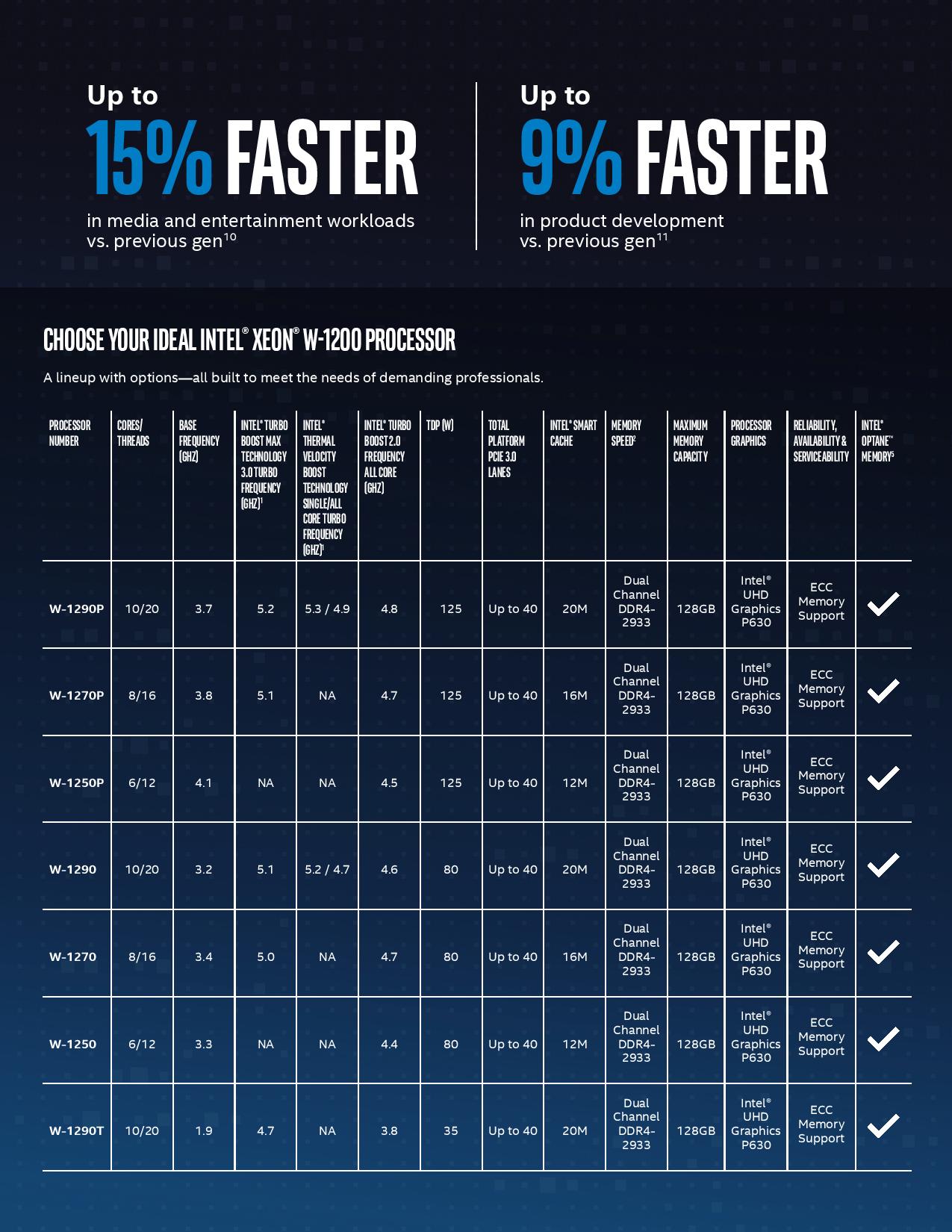


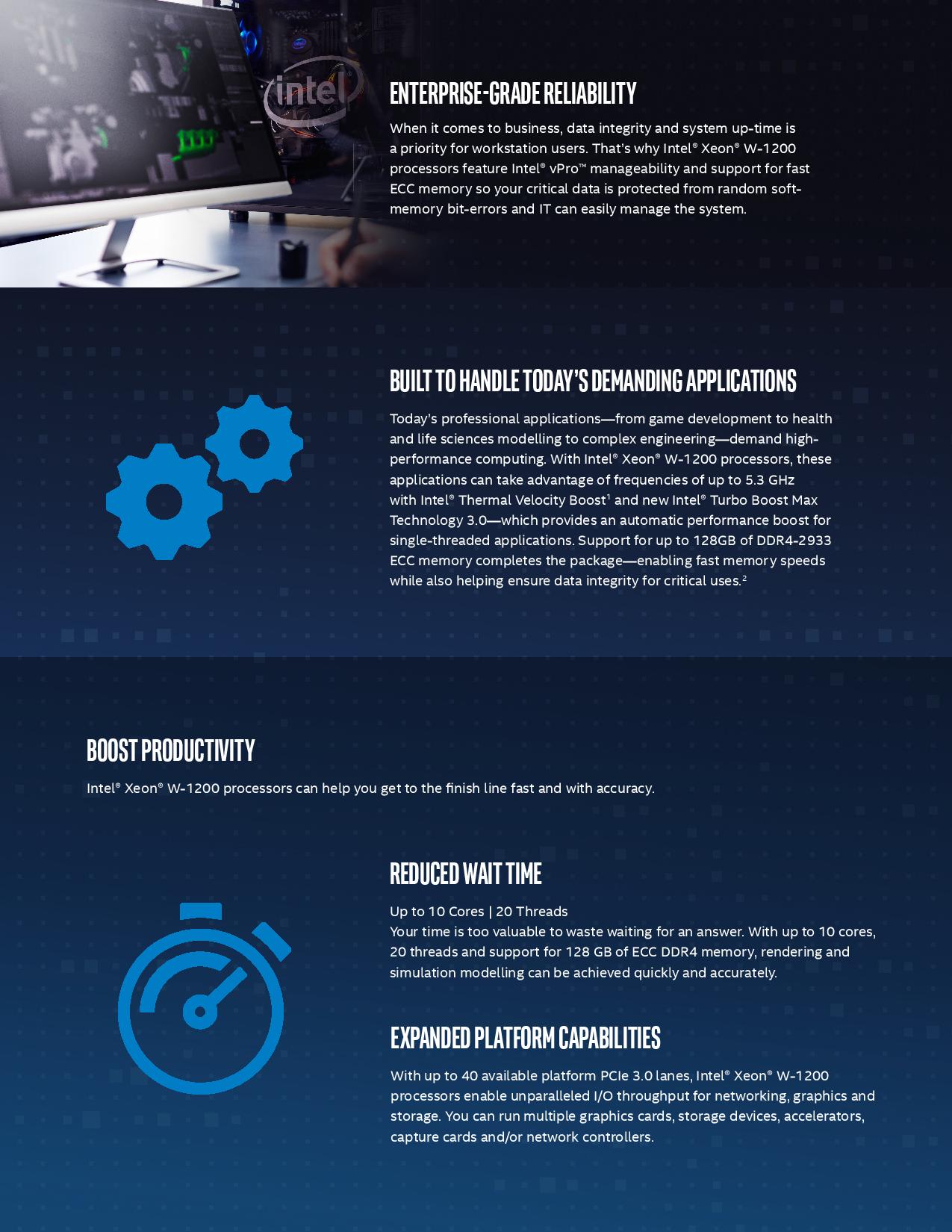
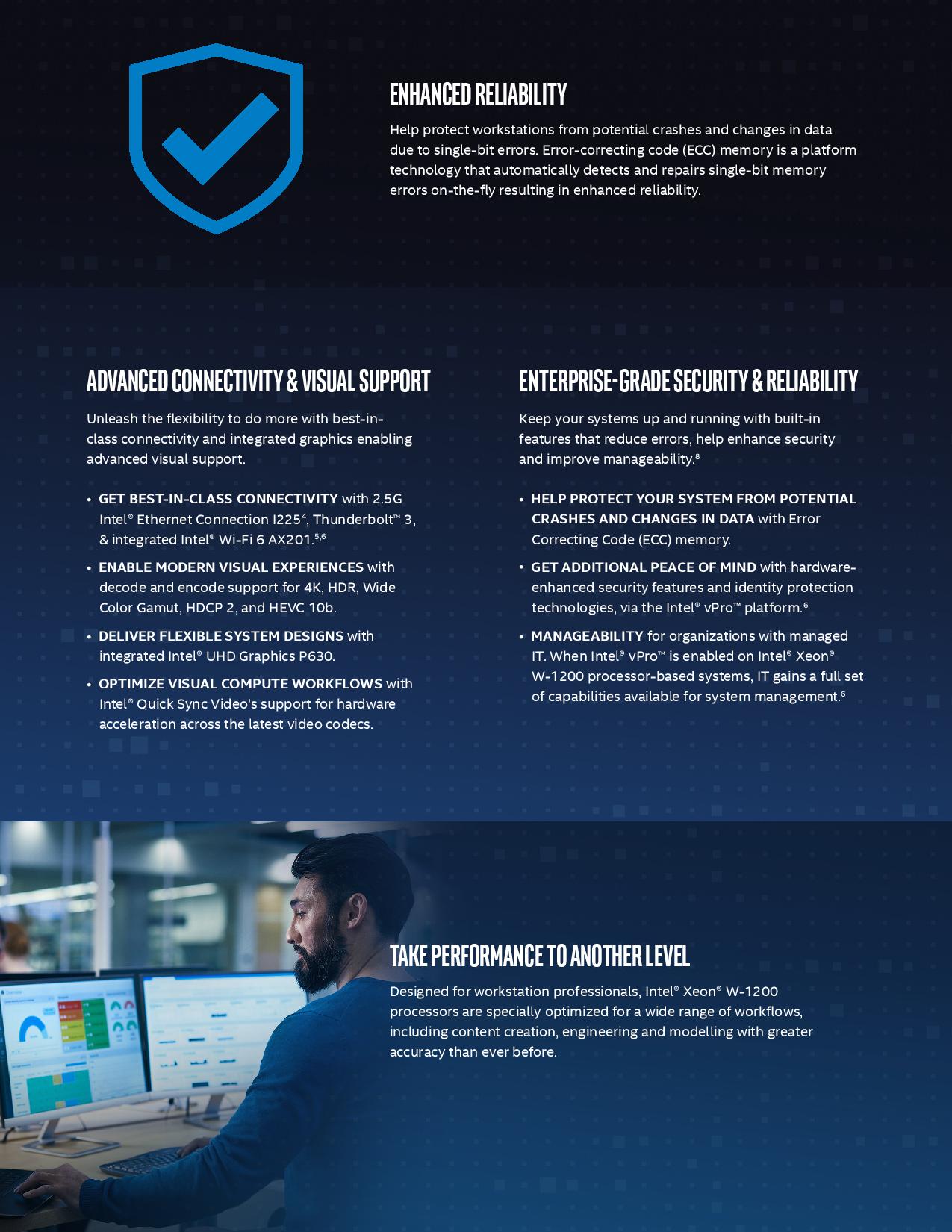
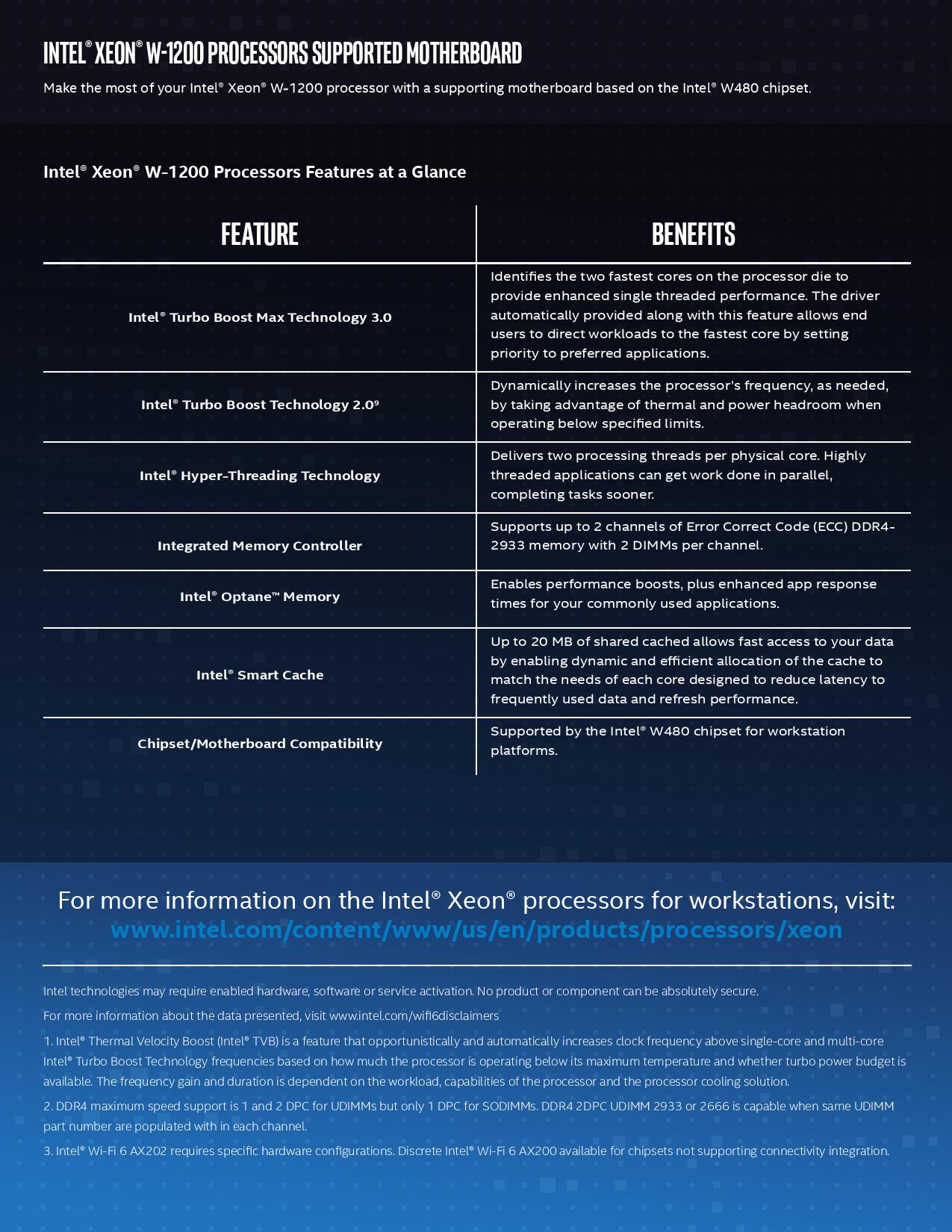
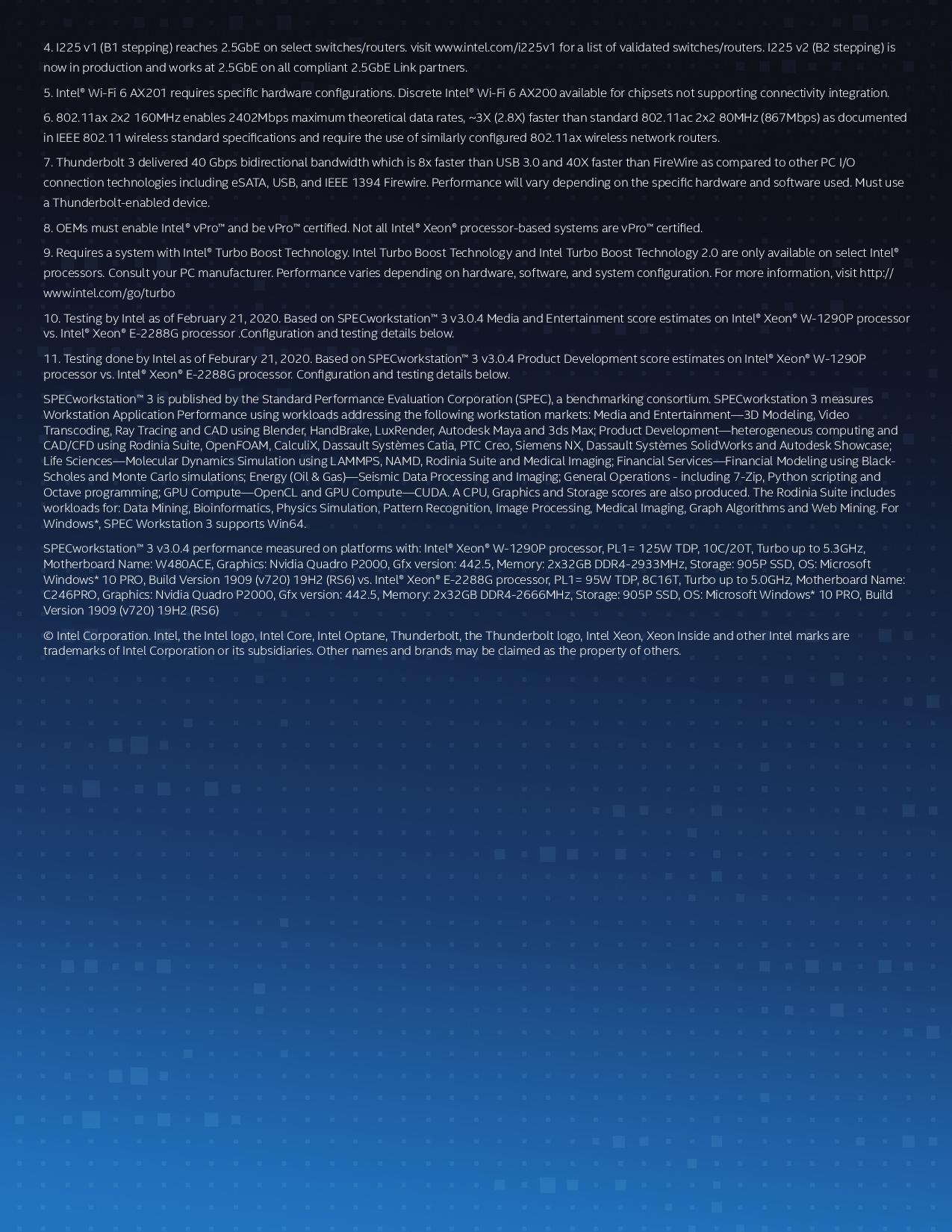
The Xeon W-1200 series spans from the six-core 12-thread W-1250, which operates at an 80W TDP, up to the 125W W-1290P that comes armed with ten cores and 20 threads.
The new P-series models denote the 'performance' variants, with the halo W-1290P operating at a 3.7 GHz base frequency and boosting up to 5.3 GHz with Intel's Thermal Velocity Boost (TVB) tech that enables higher boost thresholds if the processor remains under 70C during operation. If temperatures exceed that threshold, the chip drops down to 5.2 GHz via the TurboBoost Max 3.0 feature that utilizes the fastest CPU cores in lightly-threaded applications through a thread-targeting technique.
TVB functionality is only present on two of the ten-core models. In contrast, the ten-core 35W W-1290T is designed to operate in thermally-constrained environments, and thus features a constrained frequency and power envelope. As mentioned, the processors differ from their consumer counterparts with the addition of ECC memory support for dual-channel DDR4-2933. As expected, the chips also come with the PCIe 3.0 interface.
Other platform additives include Wi-Fi AX202 (Gig+) support using a CNVi implementation that finds half of the solution embedded in the chipset, along with Thunderbolt 3 support. LGA1200 platforms also support Intel's new 2.5G i225 ethernet controller. Unlike previous Xeon lineups, these models do not come with graphics-less options; instead, all of the processors come with the integrated UHD P630 graphics engine.
Get Tom's Hardware's best news and in-depth reviews, straight to your inbox.


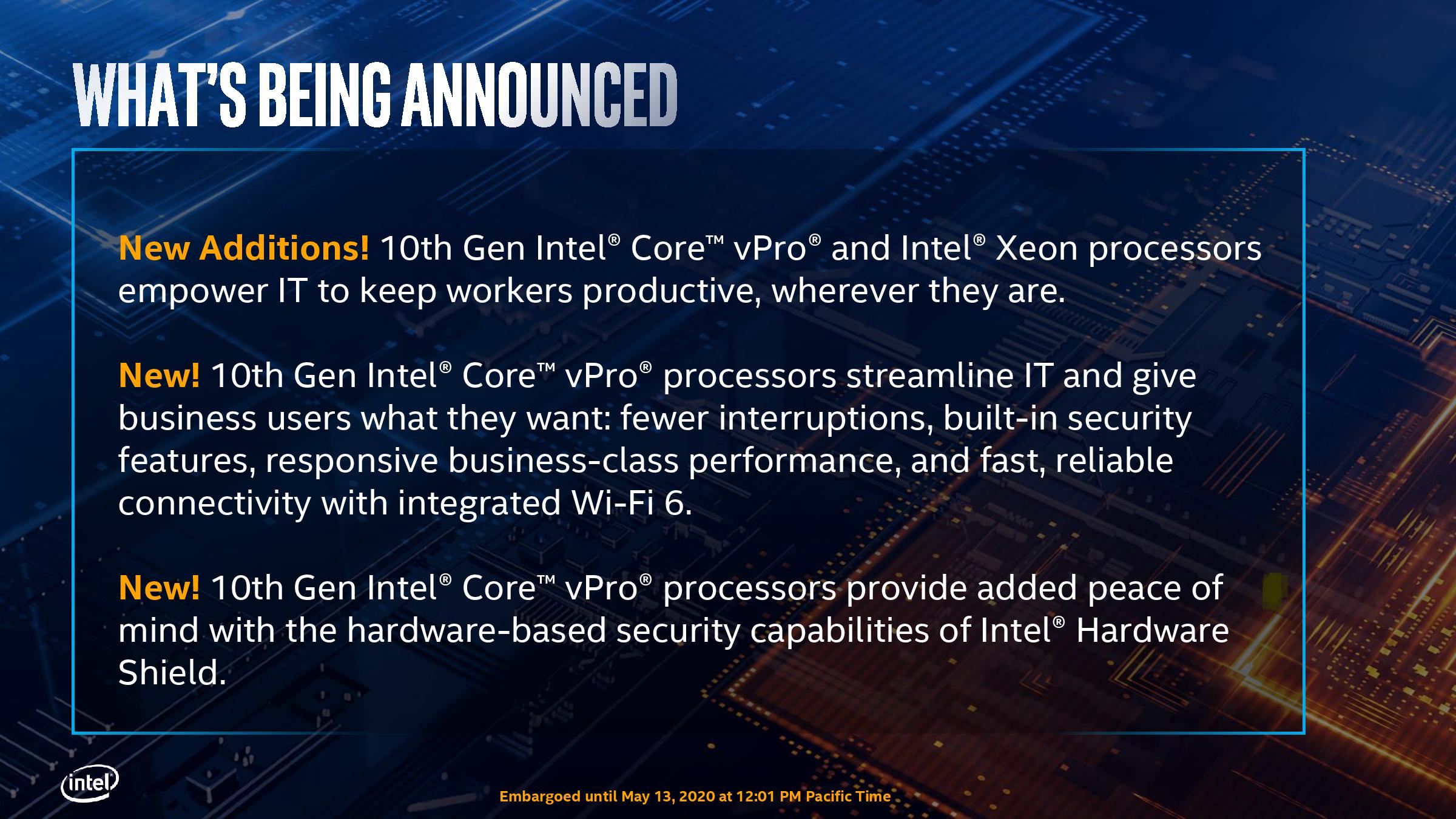
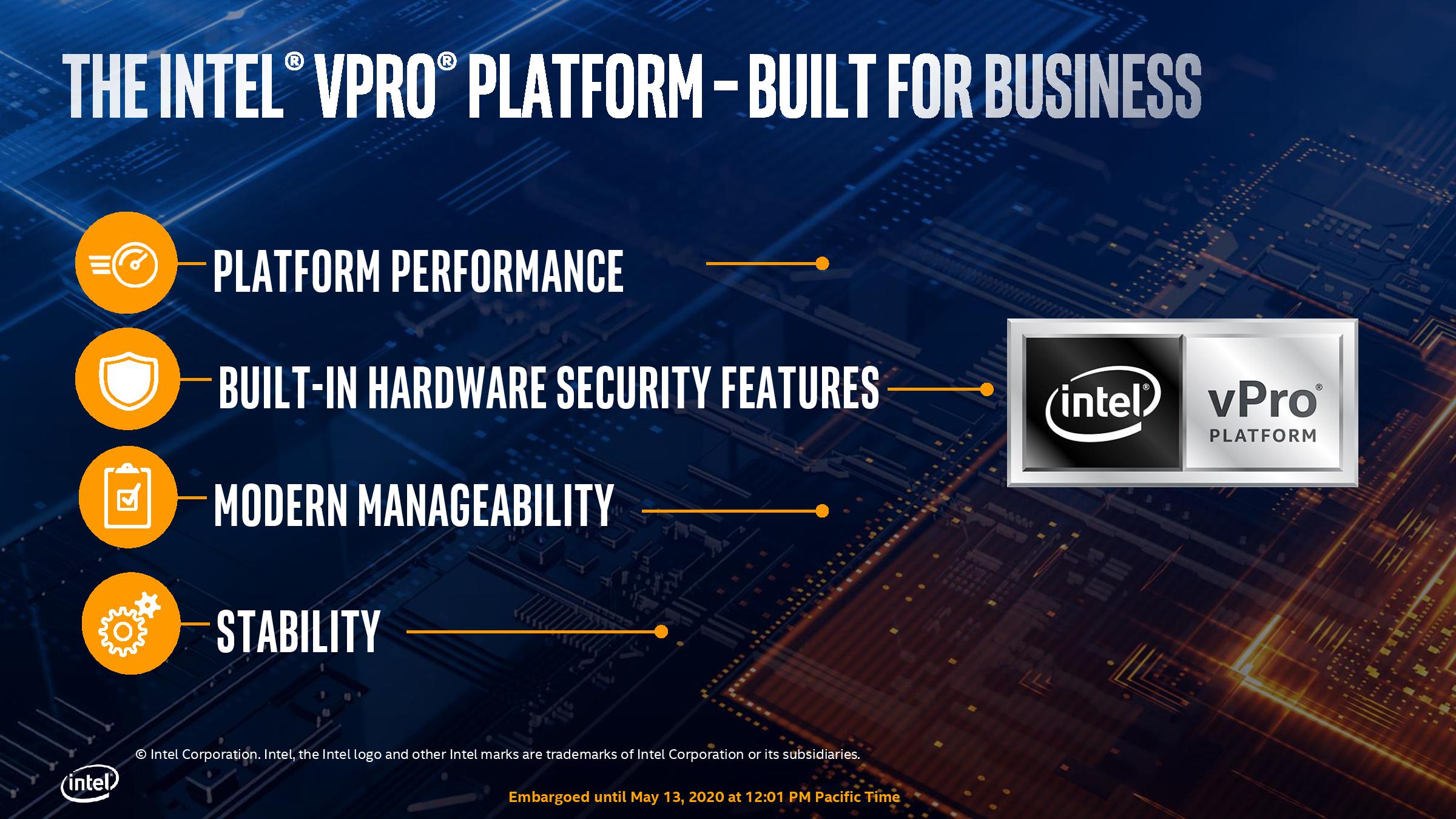
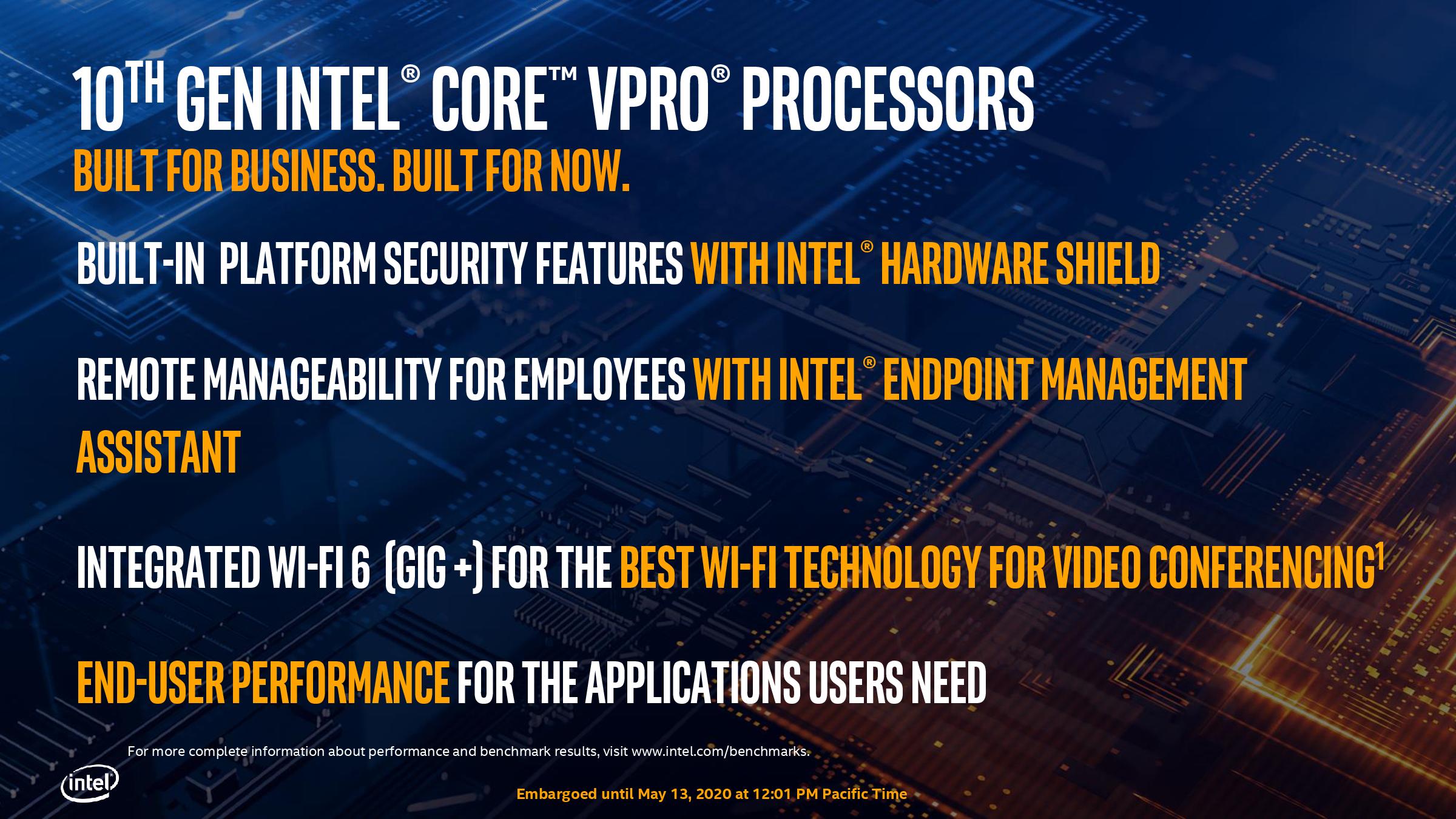
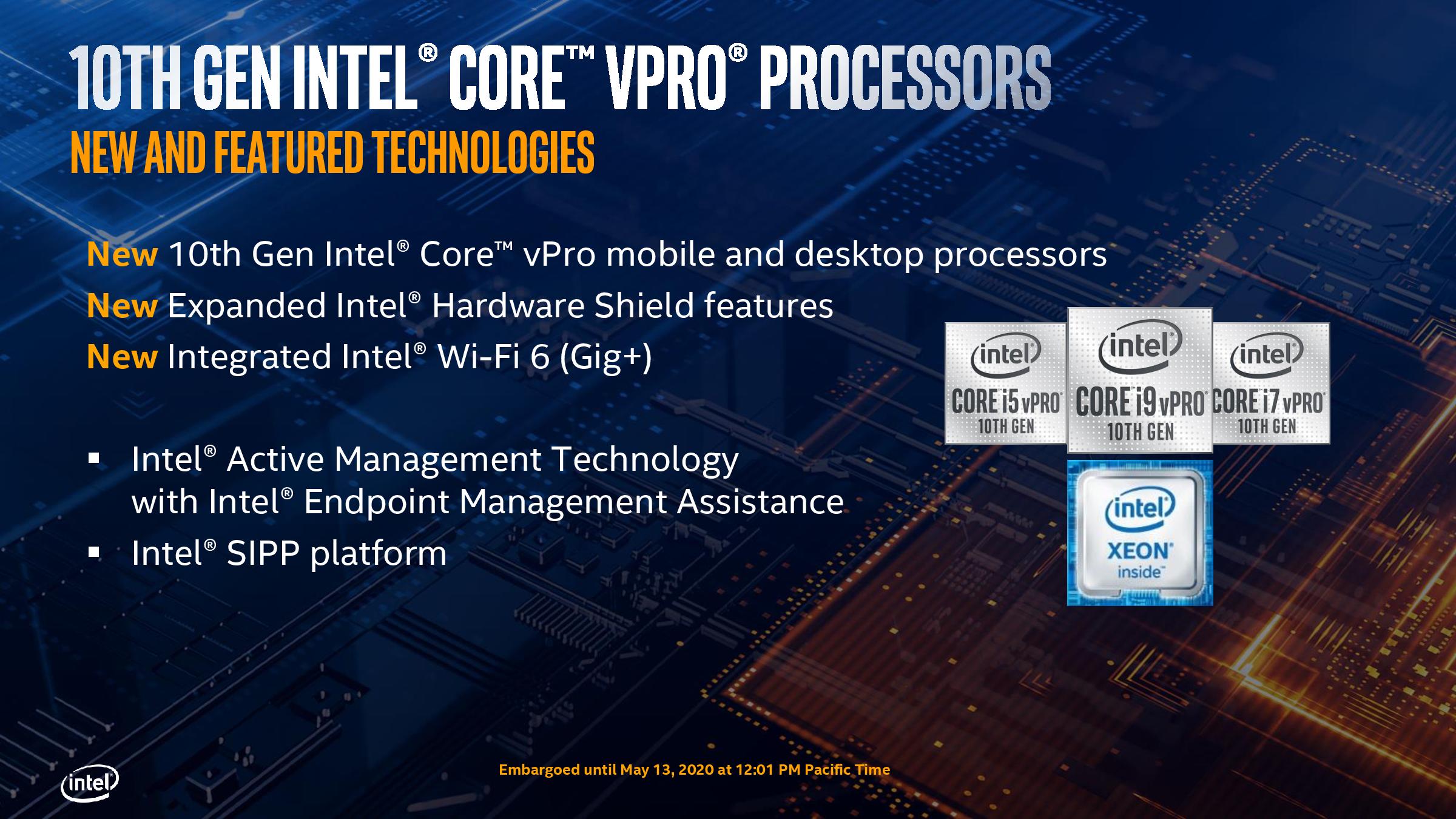
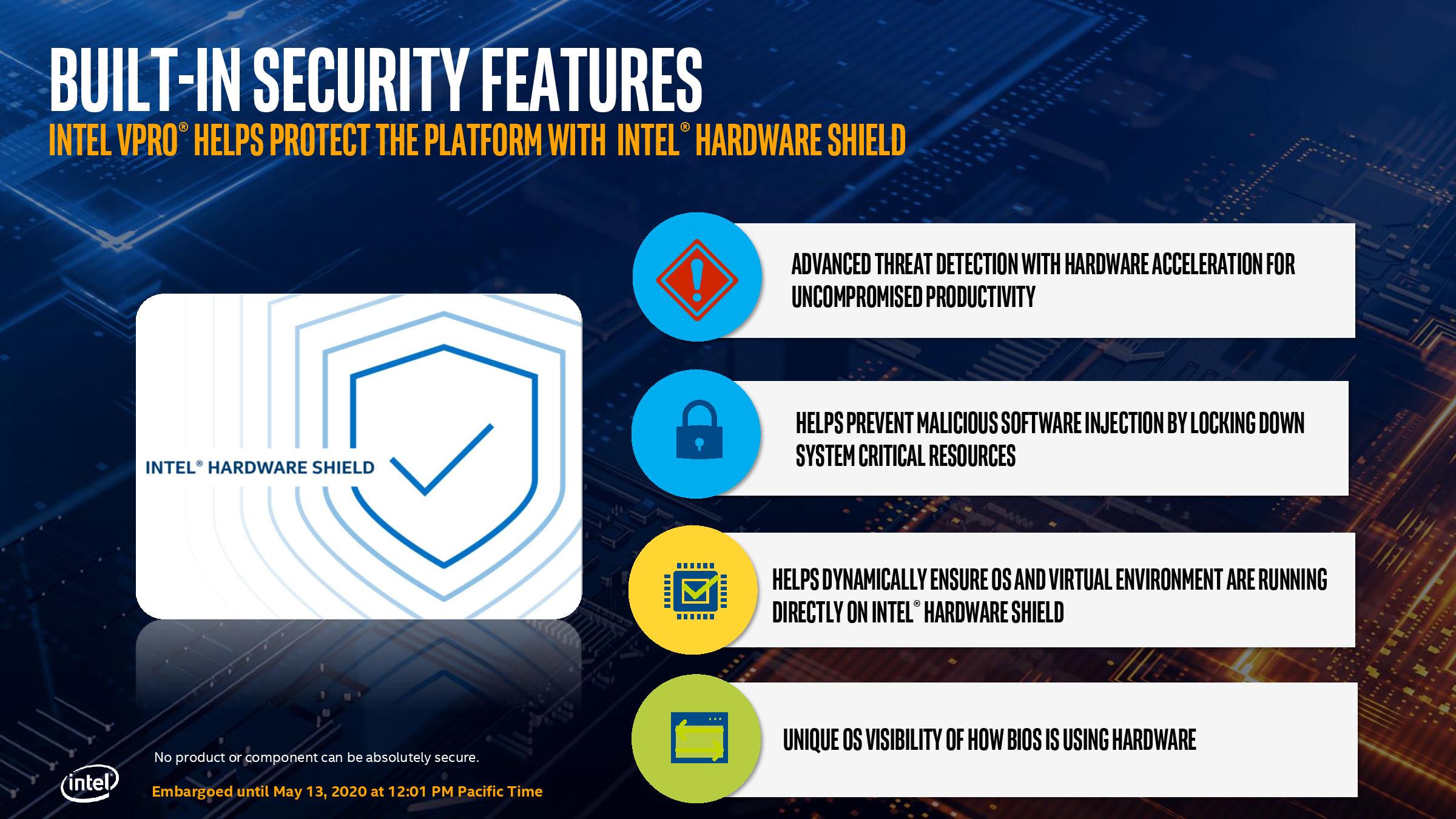



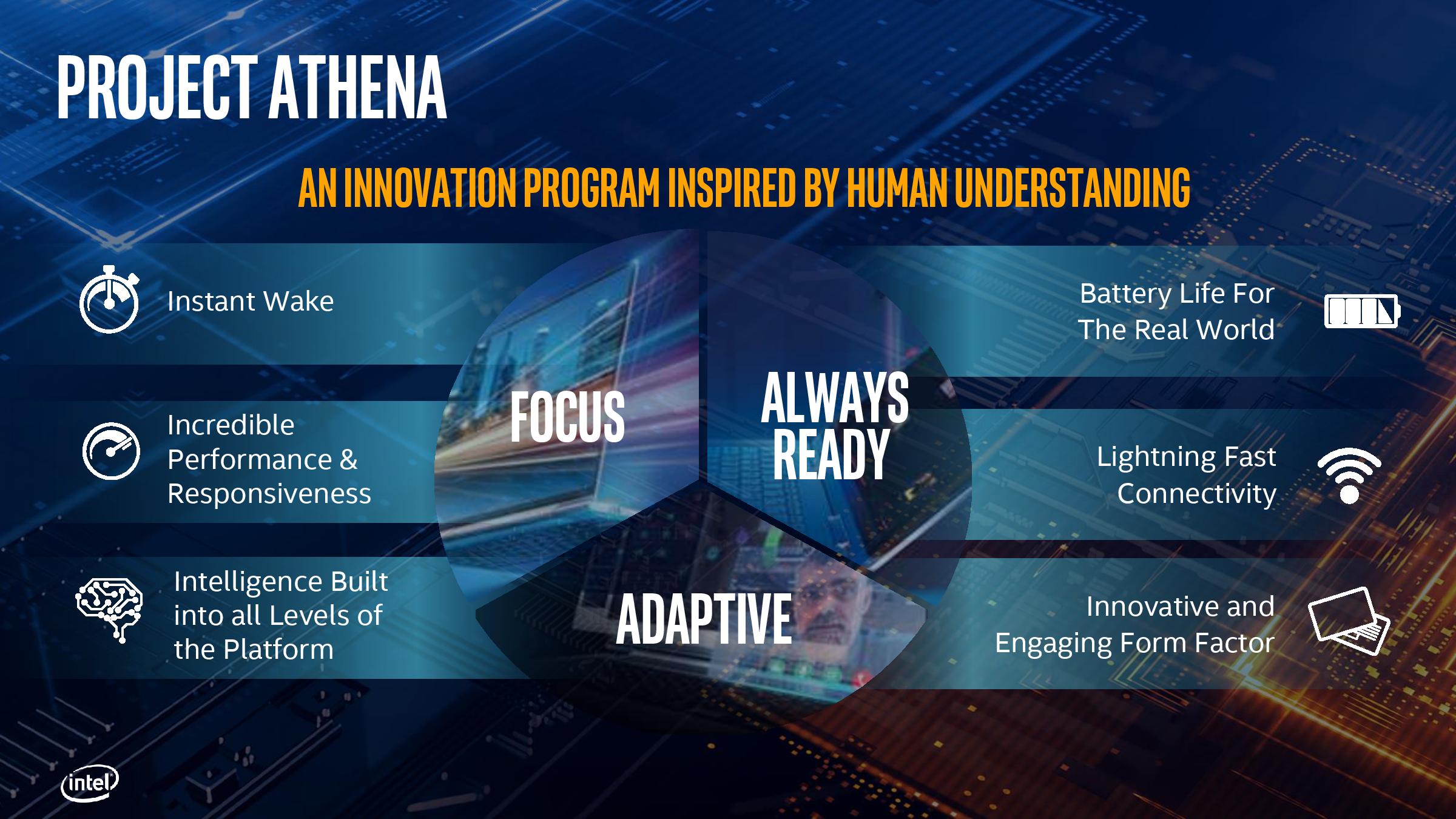

Intel also announced the Comet Lake vPro lineup for desktop and mobile users, so they support the standard 400-series chipsets. Again, these chips feature the Comet Lake design and are similar to their mainstream desktop and mobile counterparts, right down to the product naming, with vPro support being the only differentiating feature.
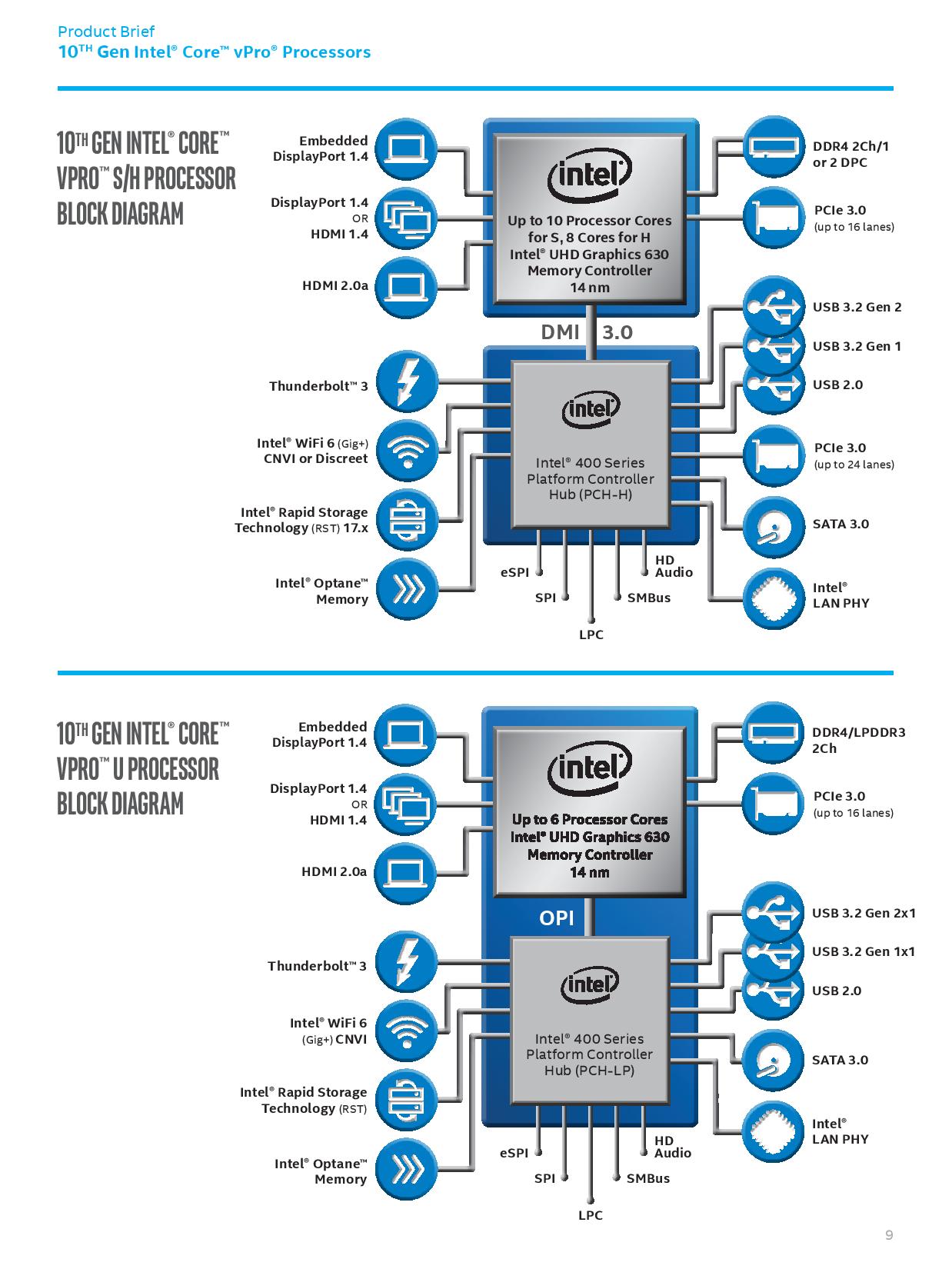
Because these processors feature the same specifications as their desktop and mobile counterparts, you can jump over to our Comet Lake-S and Comet Lake-H coverage for details of the feeds and speeds that go beyond the specification tables listed above.
Intel hasn't listed pricing or availability, but we'll update as we learn more.

Paul Alcorn is the Editor-in-Chief for Tom's Hardware US. He also writes news and reviews on CPUs, storage, and enterprise hardware.
-
PCWarrior This is a very interesting launch. The W-1290P, which is the 10900K equivalent, is $539, just $40-$51 more expensive (the 10900K MSRP is listed as $488-$499). With just a $40-$50 premium you get ECC memory support, vPro, AMT, EMA, and likely a better binned chip. That at the expense of overclocking but overclocking is not that necessary given that on all locked cpus (including Xeons) you CAN remove power limits and have the CPU turbo boost indefinitely to its stock turbo speeds which are pretty high in this generation anyway. And even on locked cpus and locked motherboards you CAN change the BCLK to 102-103MHZ so 49x102 or 103MHz and you reach or exceed 5GHz. As for RAM, if you are buying this over the 10900K it is because of ECC and there is no ECC UDIMM that is clocked over 3200MHz anyway. And 2933MHz with lower timings is just as good plus we are talking about a 0-2% difference to begin with even with looser timings. Also W480 boards, much like the former C646 boards, are cheaper, and in many ways more feature-rich, than their Z490 counterparts that are overengineered to handle extreme 7GHz+ overclocks that nobody can attain due to cooling limitations.Reply
Here is a workstation build that I would personally be contemplating for a total of $2750:
CPU: Intel Xeon W-1290P (10C/20T 5.3GHz/4.9GHz) - $540 - hereM/B: ASUS Pro WS W480-ACE - $295 - hereRAM: 64GB (2x32GB) ECC UDIMM - DDR4-3200 (run at 2933 with lower timings) - Nemix ME25600-328K02-G (SK Hynix chips) - $460
Storage Drive: 2TB Adata XPG SX8200 Pro - M.2 NVMe - $260 - hereGPU: Nvidia RTX Ampere based xx80 series (2080Ti equivalent) - $720
CPU Cooler: Noctua NH D15 Chromax Black - $90 -hereCase: Fractal Design Define 7 - $160 - herePower Supply: Corsair HX850i 850W 80 Plus PLATINUM - $225 - here